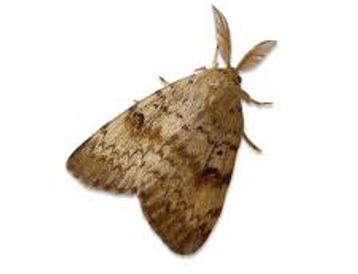
Superior Quality Logs
VENEER LOGS and SAW LOGS in EXCELLENT QUALITY

VENEER LOGS and SAW LOGS in EXCELLENT QUALITY

We offer VENEER LOGS and SAW LOGS in ASH, WHITE OAK, RED OAK, BLACK WALNUT, HICKORY, BLACK CHERRY, RED GUM, ELM AND YELLOW POPLAR.
CTI imports PAULOWNIA SIDING and TRIM BOARD since 2012. We offer regular width TRIM BOARD 4" through 12" and SIDING as BEVELED , DUTCH LAP, COLONIAL BEAD or any other as well as CUSTOM shaped profiles.
We offer VENEER LOGS and SAW LOGS in WHITE OAK, RED OAK, BEECH and SPRUCE

THE MOST DESTRUCTIVE
FOREST PEST
The Spongy Moth (Lymantria dispar dispar), formerly known as the Gypsy Moth, is the most destructive forest insect pest to infest northeastern U.S. forests. Repeated defoliation by the Spongy Moth poses a serious threat to woodland and shade trees. Most trees survive 1-2 defoliations, but the thi
THE MOST DESTRUCTIVE
FOREST PEST
The Spongy Moth (Lymantria dispar dispar), formerly known as the Gypsy Moth, is the most destructive forest insect pest to infest northeastern U.S. forests. Repeated defoliation by the Spongy Moth poses a serious threat to woodland and shade trees. Most trees survive 1-2 defoliations, but the third is nearly always fatal. It can kill about 65% of the trees in a forest. Spongy Moths are known to feed on oak, maple, apple, crab apple, hickory, basswood, aspen, willow, and birch, although oak is their preferred species. Since 1970, the Spongy Moth has destroyed about 83 million acres of forest. Regularly check for early signs of infestation, so you can act quickly to control the population before it spreads. If you spot spongy moth egg masses or larvae, report them to local agricultural or forestry authorities for further action. Taking a combination of these steps, particularly when implemented early in the moth's life cycle, can help control spongy moth populations and protect trees from further damage.

WHAT CAN WE DO AGAINST SPONGY MOTH
The most efficient way to eliminate Spongy Moth is through aerial spraying with the organic insecticide BT (Bacillus thuringiensis). BT is a naturally occurring bacterium in the soil that produces proteins toxic to certain insects when ingested. Spraying can be carried out using a crop duster,
WHAT CAN WE DO AGAINST SPONGY MOTH
The most efficient way to eliminate Spongy Moth is through aerial spraying with the organic insecticide BT (Bacillus thuringiensis). BT is a naturally occurring bacterium in the soil that produces proteins toxic to certain insects when ingested. Spraying can be carried out using a crop duster, helicopter, or drone. CTI offers this service using drones, as we believe it is the most effective method. One reason for this is that drones fly closest to the treetops, delivering the insecticide with minimal drift and ensuring deeper penetration due to the air turbulence the rotors generate. Landowners can also reduce the impact of Spongy Moth by scraping egg masses off trees into a small container of soapy water and disposing of them properly. There is a wealth of information available online. CTI has also used a small propane torch to burn the egg masses on trees, which is a fast and secure way to destroy all accessible eggs. Please only use this method when the weather permits.

WHY SHOULD WE SPRAY AGAINST SPONGY MOTH
Like most decisions regarding our home and property, it ultimately comes down to money. Spraying against Spongy Moth is not as expensive as you might think. In the Hudson Valley, the average stumpage price for Red Oak, most likely the dominant species on your property, is about $450 per MBF. Conside
WHY SHOULD WE SPRAY AGAINST SPONGY MOTH
Like most decisions regarding our home and property, it ultimately comes down to money. Spraying against Spongy Moth is not as expensive as you might think. In the Hudson Valley, the average stumpage price for Red Oak, most likely the dominant species on your property, is about $450 per MBF. Considering a low average of 1,000 board feet (BF) per acre, you will have a timber value of $450 per acre. The cost of spraying is typically around 15% +/- of the timber value per acre. The true value of the timber can only be determined through a timber cruise.
Trees do not grow in one generation or a few years; they are a long-term investment and an excellent "savings account" because they grow about 7% per year all by themselves. But sometimes, we need to help them survive, just as we do with all our valuables, whether it's changing the oil in our cars, keeping an exotic car in a heated garage, painting the house, or taking our pets to the vet.
There are a few variables in the cost, such as the choice of BT and the concentration at which it is applied. Another factor is the size of the property.
Please contact us at SpongyMoth@ctilogs.com and include your address, the property address, and your contact information.